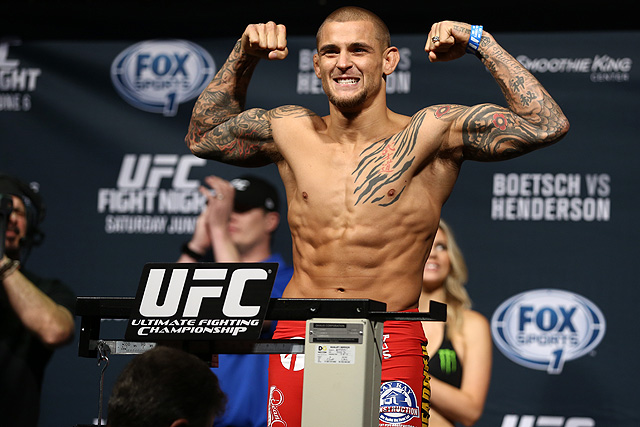The debate over whether MMA organizations need to add weight classes in nothing new. The people in favor of additional divisions argue that it would help limit the seemingly constant issues with weight-cutting and allow for more “super fights” between champions. Fans who don’t want changes claim it would hurt the depth of the divisions that are already thin, as well as being marked as a fake division with champions who weren’t good enough to capture belts anywhere else.
Weight-cutting is dangerous, and efforts to eliminate it from the sport far outweigh the potential that some fans won’t hold the champions in the same regard as champions in the current divisions. MMA doesn’t need a new weight class every five to seven pounds like in boxing, but weight classes at every 10-pound mark from 125 pounds to 205 pounds, plus a cruiserweight class at 225 pounds, already exist under the unified rules, as of July 2017, and are just waiting to be adopted by an organization like the UFC or Bellator.
Fighter safety is the most important thing. It should be the driving force behind an organization’s move to introduce new divisions. Fans benefit, too, because this new set of weight classes creates the potential for dream match-ups between fighters that right now are far too rarely contested at catchweights.
The possibilities in the “super” divisions of super lightweight (165 pounds), super welterweight (175) and super middleweight (195) are nearly endless. Tyron Woodley and Robert Whittaker could meet at super welterweight and combine for one of the best pairings we could ask for between two current champions. What about Stephen Thompson and Israel Adesanya? I’d give my last $65 to see “Wonderboy” take on “The Last Stylebender.” In Bellator, Michael Chandler could meet Michael “Venom” Page at super middleweight. The list goes on and on of fights we won’t get the chance to see without these new weight classes.
What’s even more exciting than picking one fighter to go up a weight class and one to move down a division, is that fighters who are currently in the same weight class could both move up and fight each other at a weight closer to their “walking-around” weight. This idea was brought to the forefront last week when Dustin Poirier and Nate Diaz both claimed on Twitter that they are now the main event of UFC 230 with a belt on the line at 165 pounds. While so far this rumor has failed to be confirmed by the UFC, a fight between these two men at super lightweight is the best thing that could happen, regardless of whether a title is at stake.
When Diaz went up against Dong Hyun Kim and Rory MacDonald, it was evident that he is not a true welterweight. Diaz is a bigger lightweight who missed weight once in December 2014 against Rafael dos Anjos. If he competed without having to cut the extra 10 pounds to make the lightweight limit, it would stop him from dehydrating himself in the days prior to the fight before stepping on the scale. The same can be said for Poirier, who is on a five-fight unbeaten streak at lightweight since his loss to Michael Johnson just over two years ago. “The Diamond” moved up from featherweight after a 2014 knockout loss and has said on the UFC Unfiltered podcast that even making the lightweight limit isn’t easy for him anymore. Again, even without the title in the picture, it would make sense to shift this contest from a lightweight bout to a super lightweight affair. In this case, the fighters would be closer to competing under optimal circumstances.
To stick with the UFC 230 fight card, there is also a middleweight rematch that would ideally be contested up a weight class at super middleweight. When Luke Rockhold weighed in for his last fight against Yoel Romero, he was not only physically drawn, but also clearly affected mentally by the hard weight cut. This was obvious in his backstage interview with Megan Olivi. Meanwhile, Chris Weidman walks around north of 200 pounds and had a famously difficult weight cut before his fight with Demian Maia. Rockhold has recently said he wants to move up to light heavyweight, and Weidman was once anticipating the move to 205 pounds to meet Jon Jones when the two native New Yorkers were champions of their respective divisions.
It seems simple — Rockhold and Weidman are big middleweights who walk around at similar weights, so why not allow them to skip the brutal weight cut and give the fans a battle between two former champions at super middleweight?
These fights wouldn’t have to be for a belt to matter or to increase the quality of the fight. No fans could claim that fighters were jumping weight classes because they weren’t good enough in their original division. Instead, we’d all get to see some great pairings, and the fighters wouldn’t have to risk their health. It’s a win for everyone.

